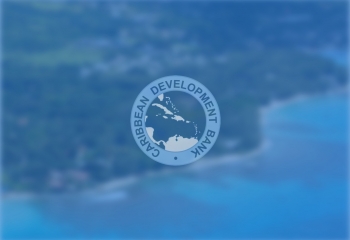New Standby Facility Knowledge Resource Provides Guidance for Successful Project Monitoring, Evaluation and Reporting

Assessing the performance of sustainable development projects is a complex process that requires reliable, accurate and timely information to determine the progress and impact of activities for overall success. For many projects, gaps in the availability of high quality data creates barriers to effectively monitor, evaluate and report (MER) performance, hindering accountability and the demonstration of value for money throughout the project continuum.
At the Caribbean Development Bank (CDB), projects supported through the CARIFORUM-EU Economic Partnership Agreement (EPA) and CARICOM Single Market and Economy (CSME) Standby Facility for Capacity Building are obliged to utilise suitable MER systems that fully maximise data capabilities and performance results as critical elements to support implementation.
Through its ongoing commitment to build the capacity of national implementation partners in project management, the Standby Facility team recently released a new knowledge management resource (KMR) to support organisational learning in MER.
Titled “Monitoring for Performance Results: Key Concepts and Procedures”, the publication gives clear guidance on functions that form part of the Facility’s project delivery cycle and the results-based management (RBM) approach, which is intended to promote better decision making and a greater focus on results.
“Monitoring and Evaluation is the glue that holds together the components of a project. However, it is sometimes the last tool, in the toolbox, that gets used. It is my hope, that implementing partners will value this new knowledge management resource and use it as the primary driver to successfully guide implementation and reporting of project performance,” said Mr. Dale Phoenix, Results Officer for the Standby Facility, who led the development of the publication.
Key topics in the KMR include EPA & CSME Standby Facility MER functions, results monitoring framework, project performance measures, data storage and retrieval, as well as quantitative and qualitative data quality assessments. Also featured is a step by step guide for the Facility’s project delivery cycle that serves as an implementation roadmap with prompts for MER functions.
“The new Standby Facility Knowledge Management Resource – or KMR – has positively impacted the implementation of our project activities. Utilisation of the tools provided by the KMR improves the ways in which requested information is collected and reported. It has also aid in monitoring & evaluation of project activities as the templates provided helps to capture the information that is necessary to measure and track progress of project activities,” explained Ms. Si’Jaye Bryce Parchment, Project Officer – Monitoring and Evaluation at the Jamaica Business Development Corporation (JBDC) who leads implementation of the Standby Facility Project “Increasing the Export Capacity of Micro and Small Agro-Processors Using the Cluster Approach”.
While the publication contains key concepts and procedures for use by project coordinators in designing and performing all of the Facility’s MER activities, it can also be used by national administrations/agencies involved in EPA and CSME implementation including national focal points, national EPA implementation units and agencies with responsibility for EPA related project implementation in CARIFORUM states.
The Standby Facility will continue to create knowledge management products and support organisational learning in MER, through this document, and with the building out of training outputs targeted to its 26 projects approved for implementation.



